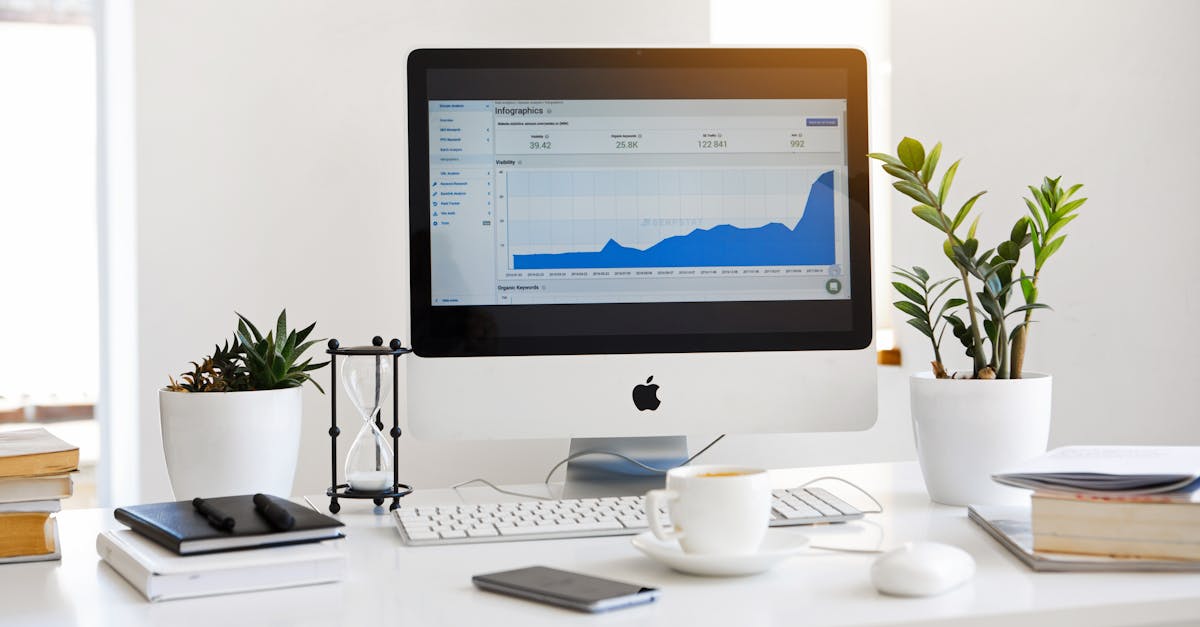
April 7th, 2025


Written by Jon Clark
In today’s ever-changing digital marketplace, managing Google Shopping campaigns requires more than just setting up product feeds and bidding on keywords. It involves a comprehensive blueprint that streamlines efficiency while building a foundation for sustainable success. At EClickPro, we have refined our approach by combining industry insights, advanced tools, and a clear strategic vision that resonates with the unique challenges faced by retailers and e-commerce businesses. In this blog, we share our modern blueprint for Google Shopping Management, offering practical tips, detailed strategies, and actionable insights that can help you drive qualified traffic, increase sales, and maximize your return on investment.
The world of digital marketing has witnessed rapid changes over the past decade, and Google Shopping is no exception. Initially viewed as a simple platform for product listing ads, it has grown into a powerful tool that leverages machine learning, dynamic bidding strategies, and granular data analytics. This evolution means that traditional practices are now complemented by innovative techniques designed to improve campaign performance and efficiency.
At EClickPro, we believe that understanding this evolution is key to designing a strategic approach that not only meets today’s standards but also lays the groundwork for future advancements. Our modern blueprint for Google Shopping Management includes elements that address both immediate performance gains and long-term sustainability.
There are several core elements that need to be integrated into a successful Google Shopping strategy. Below, we detail the components that we consider non-negotiable when it comes to building and maintaining a competitive campaign:
An accurate and optimized product feed is the backbone of any successful campaign. Ensure your product data is complete, current, and aligned with strategic keywords.
Organize your campaigns to target specific product categories, price ranges, or promotional events. This segmentation enables better management and precise budget allocation.
Leverage automated bidding tools and AI-based optimizations to ensure that your bids are both competitive and cost-effective.
-Maximize ROI by adjusting bids based on real-time performance insights.
-Implement bid modifiers for device, location, and time of day to capture the most valuable audiences.
Regularly audit your product feed to eliminate errors, update product information, and refine the data quality. A robust feed leads to more accurate ad placements and improved performance.
Set up clear performance metrics and dashboards. Use real-time data, conversion tracking, and A/B testing to continuously optimize ad spend and campaign structure.
Efficiency comes from having a streamlined process that minimizes wasted ad spend and maximizes conversion opportunities. Here are some best practices we’ve honed over time:
Make use of Google’s automated tools for bid management, budget allocation, and dynamic remarketing. Automation not only saves time but also ensures that your campaigns adapt in real time to market changes.
Break down large product groups into smaller, more manageable segments based on historical data, customer behavior, and product performance. This allows you to tailor ad messaging and bids to each segment’s potential.
-Segment by product category, pricing tiers, and even seasonal trends..
-Create custom labels in your product feed for easier tracking and optimization.
Use negative keywords to filter out irrelevant traffic and focus your ad spend on high-intent searches. This practice reduces wasted impressions and increases overall campaign efficiency.
As mobile shopping grows, ensuring that your ads and landing pages are optimized for mobile devices is crucial. Responsive design and fast-loading pages can significantly reduce bounce rates and boost conversions.
Schedule routine audits of your campaigns to identify areas that need improvement. Use A/B testing to experiment with ad copy, bid strategies, and visual elements to determine what resonates best with your audience.

While immediate results are important, building a campaign that lasts requires a focus on sustainable growth. Here’s how you can ensure that your Google Shopping efforts continue to deliver value over time:
The digital marketing landscape is continuously evolving. Attend webinars, invest in training, and stay updated with industry publications to keep your skills sharp and strategies relevant.
Don’t view Google Shopping in isolation. Integrate insights from SEO, PPC, and email marketing to create a holistic view of customer behavior. This cross-channel approach can help you craft more informed and integrated campaigns.
-Utilize customer feedback and engagement metrics to refine product descriptions, images, and promotional strategies.
-Monitor the performance of each campaign element and iterate based on data-driven insights.
The digital ecosystem is unpredictable. Building flexibility into your strategy—such as dynamic budget adjustments or scalable campaign structures—can allow you to swiftly address market changes and capitalize on emerging trends.
Instead of solely chasing immediate clicks, develop a comprehensive strategy that nurtures customer relationships. Consider remarketing efforts, loyalty programs, and personalized ad strategies that build long-term customer loyalty.
Modern campaign management is powered by sophisticated tools that bring data into clear focus and enable actionable insights. A few of the advanced tools that are integral to our process include:
These platforms help maintain data accuracy by regularly syncing with your inventory and automatically updating product details. A seamless data feed ensures that your ads are always reflective of your actual inventory.
Understanding the customer journey is crucial. Use conversion tracking to map out the entire process—from ad click to purchase—enabling more precise adjustments in your strategy.
Real-time dashboards provide a comprehensive view of campaign performance. By monitoring key performance indicators (KPIs) like click-through rates, cost-per-click, and conversion rates, you can make swift, informed decisions.
Advanced bid management tools automate the optimization process, helping you adjust bids based on varying factors such as time-of-day, device, and demographic performance.
It is essential to choose tools that integrate seamlessly with your existing systems and that offer flexibility to adapt to evolving market demands. The right combination of technology accelerates efficiency, enabling you to stay ahead of competitors and respond rapidly to market shifts.
No blueprint is complete without a robust mechanism for measurement and continuous improvement. To achieve sustainable success in Google Shopping, you must develop a strategy that leverages data for ongoing refinement. Consider these steps for a systematic approach to performance analysis:
Before you begin, establish key performance indicators that align with your business goals. These might include:
Implement analytics tools that offer a deep dive into your data. Monitor both macro trends and micro movements to identify what’s working and where adjustments are necessary. Regularly review campaign performance reports to spot trends, seasonal patterns, and areas of improvement.
Use the insights derived from your analytics to make data-driven decisions. Whether it’s reallocating your budget, refining your ad copy, or adjusting your bidding strategy, continuous testing and iteration are at the heart of long-term success in digital marketing.
By setting realistic goals and comparing your performance against industry benchmarks, you can evaluate the effectiveness of your strategies. This benchmarking process helps in identifying both successful tactics and areas that need further improvement.
This cycle of measurement, analysis, and iterative improvements not only sharpens your current campaigns but also prepares you for future shifts in the market.
One size never fits all in the digital age, and personalization is key for modern Google Shopping strategies. Tailoring your ad experience based on user behavior, demographics, and buying patterns can significantly increase engagement and conversion rates. Here are some personalized approaches to consider:
Show customized ads to users who have previously visited your site or engaged with your products. Dynamic remarketing leverages data to display product-specific images and promotions, thus increasing the relevancy and effectiveness of your ads.
Integrate custom labels in your product feed to categorize items by performance, seasonal appeal, or promotional status. This segmentation enables you to bid differently on each group based on its value to your business.
Featuring customer reviews and ratings within your ads can increase trust and drive conversions. Although not every product listing will include this information, amplifying positive user experiences can be a differentiator in competitive markets.
Adapt your ads to regional trends and preferences. Localized content—such as language variations, local pricing strategies, or region-specific promotions—resonates better with diverse audiences.
Embracing these personalized tactics not only improves ad performance but also fosters strong connections with your audience—a key factor for long-term digital marketing success.
Despite its many benefits, Google Shopping Management is not without its challenges. Here are some common obstacles and our recommended strategies for overcoming them:
Poor product data can lead to misaligned ad placements and lower conversion rates. Regular audits, automated feed management tools, and a dedicated review process can help ensure that your data remains accurate and optimized.
Balancing a limited budget while achieving meaningful results is a frequent challenge. By leveraging automated bidding, focusing on high-performing segments, and continuously optimizing, you can maximize your return on ad spend even within constrained resources.
Google frequently updates its algorithms and ad policies. To remain compliant and competitive, it is essential to stay informed about these updates and adjust your strategies accordingly.
Ensuring a consistent brand message and strategic approach across Google Shopping, SEO, PPC, and other channels can be complex. A unified strategy with integrated reporting tools can help maintain consistency and harmonize your overall marketing efforts.
One key aspect that sets successful Google Shopping campaigns apart is effective project management. At EClickPro, we assign a dedicated Project Manager to every client, ensuring that all aspects of your campaign—from initial setup to ongoing optimization—are managed meticulously. A coordinated project management process offers several benefits:
Direct communication with a dedicated manager ensures that all questions are answered promptly and that every step of the campaign is clearly understood.
With an expert managing the timeline and deliverables, adjustments based on performance data can be executed swiftly, ensuring that your campaigns remain agile and competitive.
A single point of contact provides clarity on performance reports, ensuring you understand how your budget is being allocated and its resultant impact.
This close relationship not only drives project efficiency but also builds trust and collaboration between our team and yours—a cornerstone for any sustainable digital strategy.

Long-term success in Google Shopping is not achieved overnight. It requires foresight, commitment, and continuous refinement of strategies. To future-proof your approach, consider these forward-thinking strategies:
Constantly experiment with new formats, dynamic ad creative, and emerging technologies. Being an early adopter of innovative strategies can give you a significant competitive edge.
The power of machine learning extends beyond automated bidding. Use predictive analytics to forecast trends, identify emerging market segments, and anticipate customer needs before they fully manifest.
Develop a marketing ecosystem where Google Shopping complements your SEO, PPC, and email marketing efforts. This integration not only improves the overall customer journey but also provides a robust safety net in an unpredictable digital landscape.
Continually refine your customer experience—both on your website and within the ad experience. A seamless, engaging shopping experience builds loyalty and drives repeat business, which is essential for long-term sustainability.
Market dynamics and consumer behavior change rapidly. A strategy that worked last year may not be as effective today. Schedule regular reviews to assess the performance, update your methods, and ensure that your campaigns are always aligned with the latest market trends.
Measurement is the compass that guides your Google Shopping strategy. To truly understand the impact of your campaigns, focus on the following metrics:
The percentage of users who complete a desired action after clicking on your ad. Tracking this metric helps determine the effectiveness of your landing pages and product offerings.
This metric reveals how much you are spending to acquire a customer. By optimizing your bids and targeting strategies, you can work towards a lower CPA and a better ROI
ROAS provides a direct measure of the revenue generated for every dollar spent on advertising. It is a crucial indicator of campaign efficiency and profitability.
A higher CTR often correlates with ad relevance. Regularly testing and refining your ad creative and messaging is essential to maintaining a high CTR and ensuring that your ads connect with the right audience.
By continuously monitoring these key performance indicators, you can set benchmarks, identify areas for improvement, and deploy targeted strategies for incremental gains. We believe that data should drive every decision, and embracing a culture of continuous improvement is essential for staying ahead.
Our modern blueprint for Google Shopping Management is not just about immediate returns, but about establishing a strategic framework that drives sustainable success. By integrating data-driven methodologies, automation, personalization, and a continuous improvement mindset, you can create campaigns that are built to thrive in both the short and long term.
At EClickPro, we are passionate about helping businesses grow by focusing on efficiency and long-term performance. Whether you’re looking to optimize your existing campaigns or start fresh with a comprehensive strategy, our team of Google Shopping specialists, e-commerce managers, and digital experts is here to guide you every step of the way.
If you’re ready to transform your digital marketing strategy and achieve measurable growth, consider reaching out for a free audit. Learn more about how our tailored approach can help you streamline operations and build a future-proof campaign by visiting our website at EClickPro.
Remember, the digital marketplace is constantly evolving. Staying agile, informed, and proactive in your Google Shopping Management approach will ensure that your business not only survives but thrives in a competitive landscape. We hope you find these insights valuable and invite you to implement these strategies to unlock sustainable success in your online retail efforts.
Thank you for taking the time to explore our blueprint for success. We’re excited to be part of your digital journey and look forward to partnering with you to drive growth and innovation through expertly managed Google Shopping campaigns.

Bobby Abrams specialises in helping businesses achieve better results. With a decade of sales and consulting experience, he has worked with hundreds of companies across different sectors. Bobby is passionate about using the latest technology to shape strategy and works closely with expert teams to deliver impactful projects on behalf of his clients.
The information on this website is for general guidance only. EclickPro provides digital marketing services including SEO, Google Shopping, and Meta Ads, but results vary by client and are not guaranteed. We do our best to ensure accuracy, but we do not accept liability for actions taken based on this content. For personalised advice, please contact us directly.